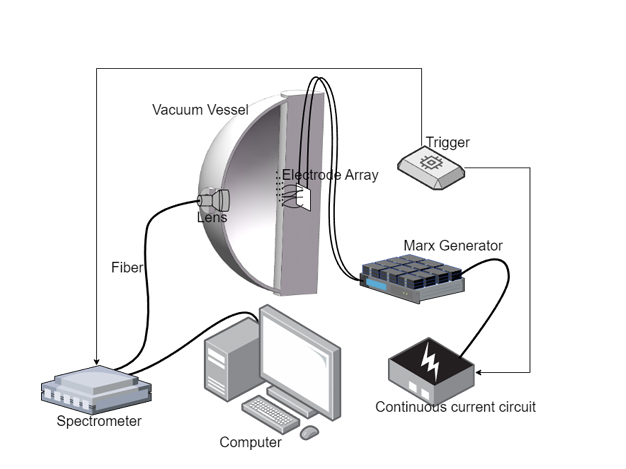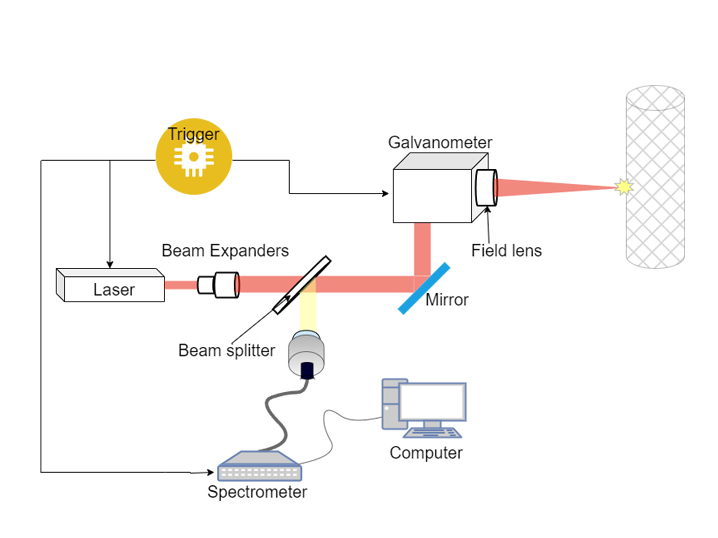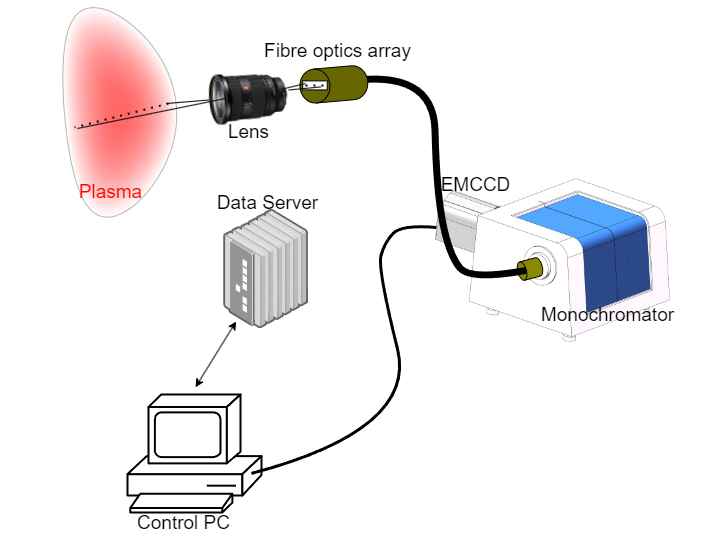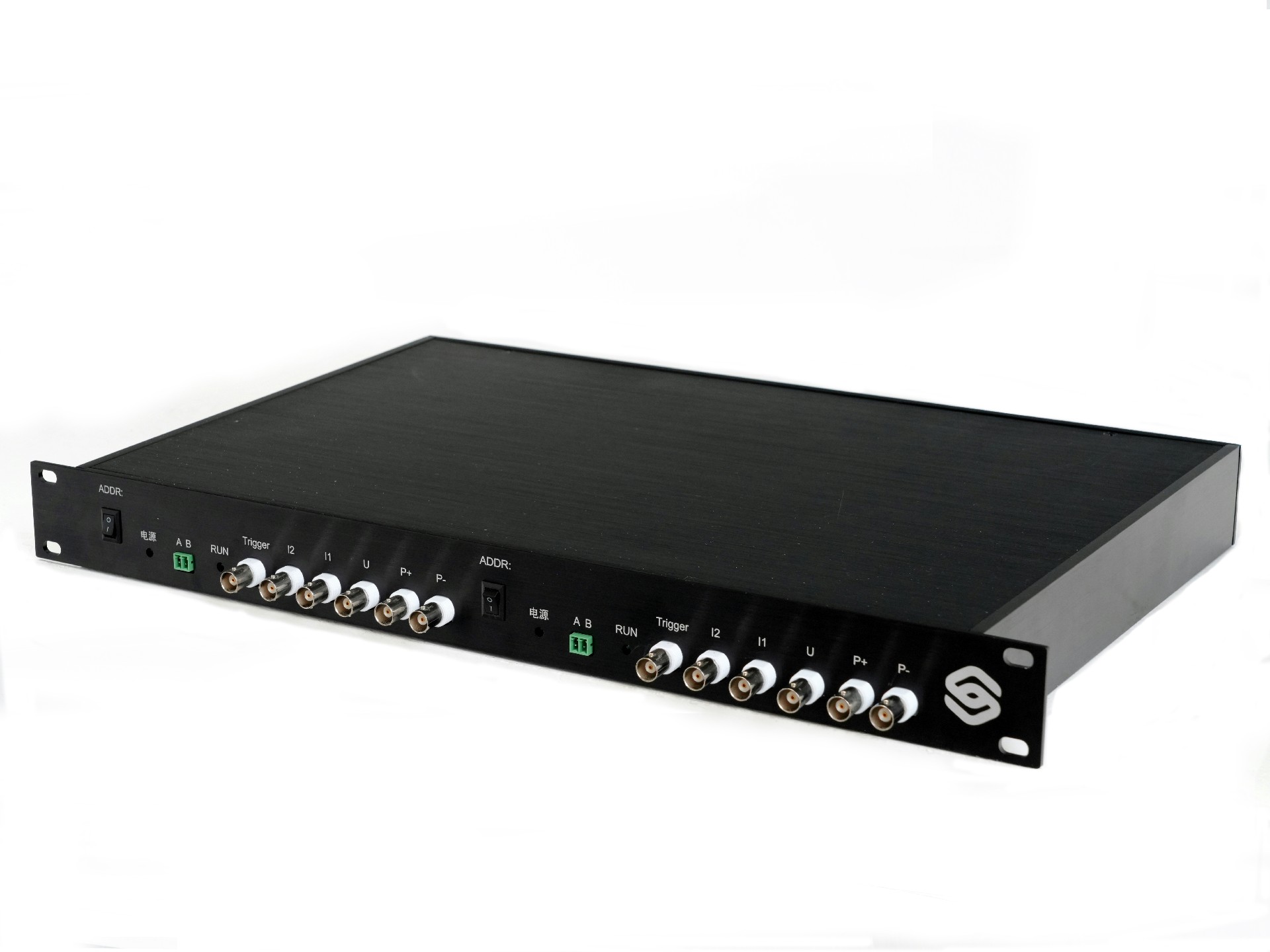
Vacuum Spark Spectroscopy System
Vacuum spark spectroscopy system involves placing detection electrodes inside a vacuum chamber and applying high-voltage pulses to generate electric sparks that ablate solid surfaces. By collecting and analyzing the plasma spectra, information on the compositional changes of the solid surface can be obtained, enabling in-situ real-time diagnosis of the vacuum chamber surface. This technology complements Laser Induced Breakdown Spectroscopy (LIBS). Compared to LIBS, it offers advantages such as lightweight equipment, not limited by viewing angles, and not affected by window transmittance.
Vacuum Spark Spectroscopy System
Vacuum spark spectroscopy system involves placing detection electrodes inside a vacuum chamber and applying high-voltage pulses to generate electric sparks that ablate solid surfaces. By collecting and analyzing the plasma spectra, information on the compositional changes of the solid surface can be obtained, enabling in-situ real-time diagnosis of the vacuum chamber surface. This technology complements Laser Induced Breakdown Spectroscopy (LIBS). Compared to LIBS, it offers advantages such as lightweight equipment, not limited by viewing angles, and not affected by window transmittance.






